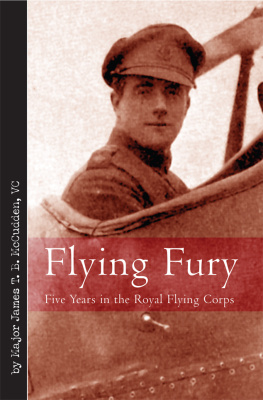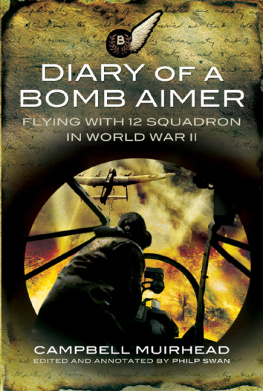
Introduction
The original manuscript of Saint Praftu was written post-1967 after I returned to the UK from India, when my experiences during and after the War were still fresh in my mind.
PRAFTU was my personal mnemonic for the pre-take-off and landing drill which I used throughout my flying career (see chapter 4), in spite of the later introduction of written check-lists. In time it became akin to a religious mantra.
Acknowledgements
To Sandy and Kelly Anderson for rescuing the original manuscript.
To Duncan Forbes for invaluable help with proof-reading and the Glossary.
To the friends who encouraged and helped me along the way, particularly Bob Large, fellow pilot in 161 Squadron Lysander pick-ups, the Koszarek families, Princess Emanuel Galitzine, and Mrs Dagny Hysing-Dahl.
To Helen MacEwan for practical assistance.
And finally to my wife Jean, for her work involving typesetting, proof-reading and editing.
Dedication
Saint Praftu is dedicated to those of my comrades who
did not survive the War, and to the friends of my civil
flying days in Burma, India and Nepal who also lost
their lives prematurely.
Contents
Chapter 1
Chapter 2
Chapter 3
Chapter 4
Chapter 5
Chapter 6
Chapter 7
Chapter 8
Chapter 9
Chapter 10
Chapter 11
Chapter 12
Chapter 13
Chapter 14
Chapter 15
Chapter 16
Chapter 17
Chapter 18
Chapter 19
Chapter 20
Chapter 21
Chapter 22
Chapter 23
Chapter 24
Chapter 25
Chapter 26
Chapter 27
PART 1
C HAPTER
Sepoy Sahib
IN 1920, when I was one year old, my parents took me to India. My father had been at the Royal Military Academy, Woolwich, before the First World War: he had served on the Western front. He was a Sapper, and after the war had been seconded to the Madras Sappers and Miners of the Indian Army, whose headquarters were at Bangalore. The atmosphere was predominantly military large parade grounds of hard, red earth, roads lined with tall trees behind which stood the bungalows with their white verandas (ours was King Lodge), tennis courts, stables and hordes of servants. My mother went to parties at the Bangalore Club, and I was carted off by my ayah to birthday parties among the officers children. My mother rode side-saddle and my father wore a large khaki topi, Sam Browne, and highly polished boots with spurs. In the evenings my mother played the piano and my father his flute in the drawing room, while I ate potato chips with Heinz tomato sauce. Those were the lotus days of the slowly dying British Raj, finally to be extinguished twenty-seven years later.
I was three years old, perhaps four, when I accepted the military life. I was going to be a soldier, not any soldier, but an officer in The Royal Engineers like my father. I was taken to Tattoos, held on the large, hot, dry earth maidan at South Parade, lined by tall trees and overlooked from one end by the C of E Cathedral. At these displays mounted officers, dressed like Gary Cooper in The Lives of a Bengal Lancer, charged with lances lowered and ran through wooden pegs stuck in the ground. Then there was marching by pipes and drums of the Indian Regiments; and finally a battle took place. Khakiclad sepoys attacked a wooden fort, mountain guns were assembled from the backs of mules and fired, with bangs and puffs of real smoke. The walls of the fort collapsed and black turbaned Afridis and assorted wild men of the North West Frontier ran out screaming. There was more firing, tribesmen and sepoys fell dead. The last to fall was the Afridi Standard bearer: the black flag of Islam, with its crescent moon and Koranic hieroglyphics, sank to the baked earth beneath the afternoon sun. A bugle blew, the dead arose, rejoined the living and marched off amidst cheers and clapping from the onlookers. My ayah took me to our Ford like those seen in Mac Sennet comedies my mother and father sat in front and we drove back to King Lodge for tea, with cucumber sandwiches.
Occasionally, in the afternoons, the pipe band of my fathers regiment came and played in the drive of our bungalow. When I was four years old I would fall in behind the drummers and march a small boy in a large topi behind tall, dark, lean men wearing wide starched shorts, puttees and high cylindrical pugris. One day the pipe major brought a small pugree and diminutive puttees for my tiny legs. In this get-up I was addressed as Sepoy Sahib, a distinction which never, ever could be exceeded.
My brother Lindsay was born in Bangalore. I didnt like his ayah she was small, but mine was big, maternal, and smelt of coconut oil. When I was five the family returned to England by boat and I remember seeing Mount Etna in eruption.
We lived with my maternal grandparents in Upper Norwood, near the Crystal Palace. Lindsay and I had a nanny, Mrs Bullen; we came to love her very much but during those early months I was miserable. My mother arranged for my Big Ayah to come to England. She arrived, but she was not the same. I was older, the sun colder, she was smaller and her smell of coconut oil lost its pungency in Upper Norwood. She returned to Bangalore. For the next twenty-five years my mother sent a card to all our servants at King Lodge. One by one they died. Big Ayah died at Bangalore in 1950.
When I was eight I was sent to Red House, a preparatory boarding school at Marston Moor. It was said to be haunted by the ghosts of Cavaliers killed at the famous battle, but it was the spirit of Dotheboys Hall that walked its draughty corridors. The headmaster was a retired sapper, Colonel Moseley, with a black moustache and a hook nose. On my very first day in class I was sent to the Colonels study for drawing a small bi-plane in the margin of my atlas: I was bent over without ceremony and received three whacks of the cane. The place was cold and draughty, and we were underfed and unwashed. I went home with twelve weeks grime on my knees, ankles, neck and behind my ears, and had to be rubbed with cold cream to loosen the dirt.
Sundays at Red House were purgatory. They started deceptively with two lovely fried sausages and half-a-slice of fried bread. We dressed in black bum-freezers and striped trousers with large starched white collars like Tweedledum and Tweedledee and walked over the frozen fields, then crossed the river Ouse by ferry to attend a long cold service in a small stone church. Occasionally we young boys were taken to York Minster to sing in the choir.
I hated the place. During my second year I was removed by my mother (my father was with his regiment in India), badly infected on my head with ringworm, caught from the Colonels cows. After six months at home, recovering, I was sent away again, this time to a more kindly prep school, St. Ronans, in Worthing. The headmaster was W B Harris; his brother, who had started the school, had been killed in the First World War while serving with the Machine-gun Corps.
I still had no doubts about my future: I was going to be an officer in the Royal Engineers. I had only to pass the Common Entrance exam to Cheltenham College, and then four years later pass another exam into the Royal Military Academy.
One summer afternoon at St. Ronans, when I was twelve, a group of us were weeding the First XI cricket pitch. Mr Pool, the mathematics master who also acted as groundsman, was riding up and down on the motor mower, keeping an occasional eye on us. We were serving off our dots, given by prefects for mis-behaviour, ten minutes weeding for each dot. Id done one dot with two to go, when a boy came up and spoke to Pooly; he waved me over and I was instructed to report to Mr. Harris study. This was a large, cool room with flower-print curtains and matching colours for the sofa and armchairs. There was a large desk by the wide windows, a shiny black grand piano with flowers on it and hundreds of framed photos covering the walls. Harry, in his white flannels, light blue blazer, and white shirt with striped silk scarf, stood with his back to the mantelpiece. He told me to sit down. He continued calmly to explain that hed had a letter from my mother to say that she and my father were divorced and that I was not to worry as I would continue to live at home, just as before. I was shocked and automatically burst into tears. Harry did his best to comfort me. I became composed under his assurance that all would be the same, school and home. He said I could stay in his study but that he was going off to the nets. I remained buried in a comfy armchair and hoping that if I stayed for half-an-hour Id probably get off doing any more weeding.
Next page













